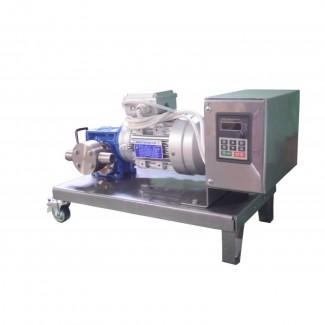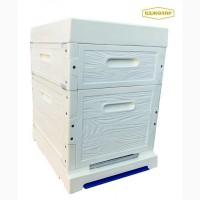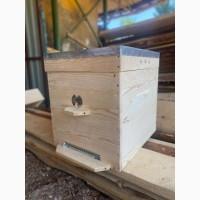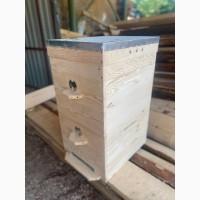/ Bees, honey and beekeeping products, equipment / Apiary equipment / Refractometers for honey / Honey pumping unit (АВВ-100)...
Sell / buy
Honey pumping unit (АВВ-100), Kharkiv region.
Region:all of Ukraine,
Kharkiv region.
Pump installation for pumping honey is intended for transporting honey in a liquid state from one container to another through a pipeline (for example,honey race during the pumping of honey to a more distant container). The installation can also be used for pumping other viscous liquids.
The main working element of the installation is the gear pump, which drives the gear motor. The parts of the pump that come into contact with honey when working, as well as the shafts, are made of corrosion-resistant (stainless) steel, which is allowed to come into contact with food products. The sliding bearings of the auxiliary shaft are made of bronze. The working shaft is sealed with a special cuff. When worn, it is easily replaced. The inlet and outlet pipes are threaded, and can be replaced by others if desired.
The installation also has a power supply unit and control of electric motor revolutions (pump performance). Everything is installed on a metal cart with wheels and a transport handle.(//tractor-service.com)
To pump liquid honey, it is necessary to tightly connect the outlet nozzle with the vessel from whichhoney will be transported, with the inlet nozzle of the pump with a hose (suction) of the appropriate diameter. This hose must be rigid enough to keep its shape when the pump is working, because when viscous honey is sucked in, it will be crushed by atmospheric pressure from the outside. As a result of this effect, it is not necessary to put sealing clamps on this section of the pipeline, it is enough to fit the hose tightly to the nozzles. Next, you should connect the second hose (injector) to the outlet pipe of the pump, which will transport the honey to the remote container. Fasten the joint firmly with a clamp. This hose must withstand the pressure of honey from the inside, especially in the first section. The second end of the hose can be freely fixed above the container for draining honey. Open the tap for honey to flow to the pump and wait for it. Press the "Start" button on the control panel. The gear pump is not self-priming, so it is necessary that the level of the liquid in the vessel from which it is pumped out should be slightly higher than the top of the pump.
Optimum productivity, l/h. 500
Question, V 230
Power, kW 0.75
The main working element of the installation is the gear pump, which drives the gear motor. The parts of the pump that come into contact with honey when working, as well as the shafts, are made of corrosion-resistant (stainless) steel, which is allowed to come into contact with food products. The sliding bearings of the auxiliary shaft are made of bronze. The working shaft is sealed with a special cuff. When worn, it is easily replaced. The inlet and outlet pipes are threaded, and can be replaced by others if desired.
The installation also has a power supply unit and control of electric motor revolutions (pump performance). Everything is installed on a metal cart with wheels and a transport handle.(//tractor-service.com)
To pump liquid honey, it is necessary to tightly connect the outlet nozzle with the vessel from whichhoney will be transported, with the inlet nozzle of the pump with a hose (suction) of the appropriate diameter. This hose must be rigid enough to keep its shape when the pump is working, because when viscous honey is sucked in, it will be crushed by atmospheric pressure from the outside. As a result of this effect, it is not necessary to put sealing clamps on this section of the pipeline, it is enough to fit the hose tightly to the nozzles. Next, you should connect the second hose (injector) to the outlet pipe of the pump, which will transport the honey to the remote container. Fasten the joint firmly with a clamp. This hose must withstand the pressure of honey from the inside, especially in the first section. The second end of the hose can be freely fixed above the container for draining honey. Open the tap for honey to flow to the pump and wait for it. Press the "Start" button on the control panel. The gear pump is not self-priming, so it is necessary that the level of the liquid in the vessel from which it is pumped out should be slightly higher than the top of the pump.
Optimum productivity, l/h. 500
Question, V 230
Power, kW 0.75
Ad ID: #917264
(added registered user)
Permanent Ad Address:
Impressions / views for today: ?, total: ?
Similar recent ads
There are many interesting ones among them.. .
Total2 similar recent adsin the heading "Refractometers for of honey"
All Ukraine: Bees, honey and beekeeping products, equipment 1303 | ||365/ Apiary Equipment 207 / Refractometers for honey 2
Kharkiv Region:Bees, honey and beekeeping products, equipment 55 / | ||383Обладнання для пасік 3 / Refractometers for honey 0











